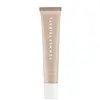What's inside
What's inside
 Key Ingredients
Key Ingredients

 Benefits
Benefits

 Concerns
Concerns

 Ingredients Side-by-side
Ingredients Side-by-side

Phytosteryl/Isostearyl/Cetyl/Stearyl/Behenyl Dimer Dilinoleate
Skin ConditioningDiisostearyl Malate
EmollientHydrogenated Polyisobutene
EmollientPolybutene
Hydrogenated Poly(C6-14 Olefin)
EmollientButyrospermum Parkii Butter
Skin ConditioningMicrocrystalline Wax
Emulsion StabilisingOctyldodecanol
EmollientSynthetic Wax
AbrasiveDisteardimonium Hectorite
StabilisingAstrocaryum Murumuru Seed Butter
EmollientSodium Hyaluronate
HumectantVanillin
MaskingTocopherol
AntioxidantPropylene Carbonate
SolventPolyglyceryl-2 Diisostearate
EmulsifyingMica
Cosmetic ColorantBHT
AntioxidantPhytosteryl/Isostearyl/Cetyl/Stearyl/Behenyl Dimer Dilinoleate, Diisostearyl Malate, Hydrogenated Polyisobutene, Polybutene, Hydrogenated Poly(C6-14 Olefin), Butyrospermum Parkii Butter, Microcrystalline Wax, Octyldodecanol, Synthetic Wax, Disteardimonium Hectorite, Astrocaryum Murumuru Seed Butter, Sodium Hyaluronate, Vanillin, Tocopherol, Propylene Carbonate, Polyglyceryl-2 Diisostearate, Mica, BHT
Diisostearyl Malate
EmollientPolybutene
Phytosteryl/Isostearyl/Cetyl/Stearyl/Behenyl Dimer Dilinoleate
Skin ConditioningPhytosteryl Isostearyl Dimer Dilinoleate
EmollientHydrogenated Polyisobutene
EmollientDextrin Palmitate/Ethylhexanoate
EmulsifyingButyrospermum Parkii Butter
Skin ConditioningGlycerin
HumectantTocopheryl Acetate
AntioxidantAstrocaryum Murumuru Seed Butter
EmollientTriethylhexanoin
MaskingEthylene/Propylene/Styrene Copolymer
Euphorbia Cerifera Wax
Dimethicone
EmollientParfum
MaskingCaprylic/Capric Triglyceride
MaskingSucrose Tetrastearate Triacetate
EmollientHelianthus Annuus Seed Wax
Skin ConditioningOzokerite
Emulsion StabilisingSynthetic Wax
AbrasivePolyglyceryl-2 Dipolyhydroxystearate
Skin ConditioningPolyhydroxystearic Acid
EmulsifyingDisteardimonium Hectorite
StabilisingLecithin
EmollientSorbitan Isostearate
EmulsifyingEthylhexyl Palmitate
EmollientIsostearic Acid
CleansingIsopropyl Myristate
EmollientDehydroacetic Acid
PreservativePolyglyceryl-3 Polyricinoleate
EmulsifyingButylene/Ethylene/Styrene Copolymer
Pentaerythrityl Tetra-Di-T-Butyl Hydroxyhydrocinnamate
AntioxidantErythritol
HumectantWater
Skin ConditioningButylene Glycol
HumectantZingiber Officinale Root Extract
MaskingDiisostearyl Malate, Polybutene, Phytosteryl/Isostearyl/Cetyl/Stearyl/Behenyl Dimer Dilinoleate, Phytosteryl Isostearyl Dimer Dilinoleate, Hydrogenated Polyisobutene, Dextrin Palmitate/Ethylhexanoate, Butyrospermum Parkii Butter, Glycerin, Tocopheryl Acetate, Astrocaryum Murumuru Seed Butter, Triethylhexanoin, Ethylene/Propylene/Styrene Copolymer, Euphorbia Cerifera Wax, Dimethicone, Parfum, Caprylic/Capric Triglyceride, Sucrose Tetrastearate Triacetate, Helianthus Annuus Seed Wax, Ozokerite, Synthetic Wax, Polyglyceryl-2 Dipolyhydroxystearate, Polyhydroxystearic Acid, Disteardimonium Hectorite, Lecithin, Sorbitan Isostearate, Ethylhexyl Palmitate, Isostearic Acid, Isopropyl Myristate, Dehydroacetic Acid, Polyglyceryl-3 Polyricinoleate, Butylene/Ethylene/Styrene Copolymer, Pentaerythrityl Tetra-Di-T-Butyl Hydroxyhydrocinnamate, Erythritol, Water, Butylene Glycol, Zingiber Officinale Root Extract
 Reviews
Reviews

Ingredients Explained
These ingredients are found in both products.
Ingredients higher up in an ingredient list are typically present in a larger amount.
Astrocaryum Murumuru Seed Butter isn't fungal acne safe.
This ingredient is also known as shea butter. It is an effective skin hydrator and emollient.
Emollients help soothe and soften your skin. It does this by creating a protective film on your skin. This barrier helps trap moisture and keeps your skin hydrated. Emollients may be effective at treating dry or itchy skin.
Shea butter is rich in antioxidants. Antioxidants help fight free-radicals, or molecules that may harm the body. It is also full of fatty acids including stearic acid and linoleic acid. These acids help replenish the skin and keep skin moisturized.
While Shea Butter has an SPF rating of about 3-4, it is not a sunscreen replacement.
Shea butter may not be fungal acne safe. We recommend speaking with a professional if you have any concerns.
Learn more about Butyrospermum Parkii ButterDiisostearyl Malate is an emollient and most often used in lip products. It comes from isostearyl alcohol, a fatty acid, and malic acid, an AHA.
As an emollient, Diisostearyl Malate helps create a thin film on your skin to trap moisture in. This helps keep your skin soft and smooth.
Disteardimonium Hectorite comes from the clay mineral named hectorite. It is used to add thickness to a product.
It can also help stabilize a product by helping to disperse other ingredients.
Hectorite is a rare, white clay mineral.
Learn more about Disteardimonium HectoriteHydrogenated Polyisobutene is a synthetic polymer. Polymers are compounds with high molecular weight. Hydrogenated Polyisobutene is an emollient and texture enhancer.
In one study, Hydrogenated Polyisobutene showed better skin hydration levels than Caprylic/Capric Triglyceride. As an emollient, it helps keep your skin soft and hydrated by trapping moisture in.
Hydrogenated Polyisobutene is often used as a mineral oil replacement.
Learn more about Hydrogenated PolyisobuteneWe don't have a description for Phytosteryl/Isostearyl/Cetyl/Stearyl/Behenyl Dimer Dilinoleate yet.
Polybutene is used to help control the viscosity of a product. This just means it helps adjusts the texture.
It is a polymer and does not get absorbed into the skin due to its large size.
Studies found this ingredient did not irritate skin in concentrations below 15%.
Learn more about PolybuteneSynthetic Wax is created from fossil fuels such as natural gas. It is used to enhance texture, adjust pH, and as an occlusive.
It may also be used as an abrasive ingredient to exfoliate the skin.
Synthetic Wax may not be fungal acne safe.
Learn more about Synthetic Wax